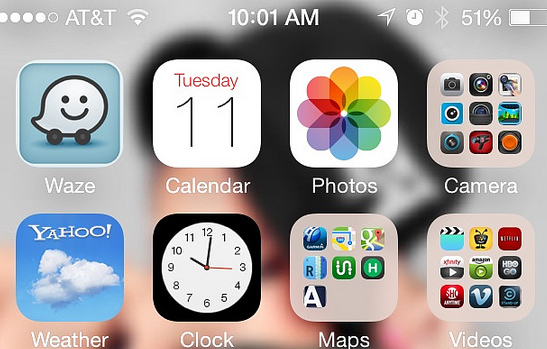The latest version of Apple’s mobile operating system, iOS 7, has now made its debut – at least for developers. (It will be updated to users’ iPhones this fall.) It shows that Apple is not above borrowing good ideas from Microsoft.
For those of us familiar with the history of personal computing – and especially the history of Apple and Microsoft – this is a new twist on an old story. In the past, Microsoft has often been accused of copying ideas (such as mouse-centric navigation) from Apple, and going on to make a bundle from them. Now it seems the tables have turned.
Farhad Manjoo reports at Slate that Apple faces a critical but subtle challenge with iOS 7 – a challenge embodied by the “7” in its name. Apple revolutionized the mobility world, but now that the revolution is over, what does Apple do in a world where its technology is no longer unique?
Design, Design, Design
Apple’s real secret in the modern era has been its unmatched sense of product design. That is why the iPhone and iPad are and remain the only tech gadgets that have established themselves as luxury brands.
So it should be no surprise that the most notable thing about iOS 7 is not new or upgraded features, but its clean, “flat” new look. What might be more surprising is that in this case Microsoft got there first.
When high-definition computer screens and phone touchscreens were still something new, Apple put great effort into skeuomorphism – the stylistic technique of imitating real-world objects. So, for example, the Notes functionality on Apple’s iPhone had the look of an old-fashioned yellow legal notepad.
But many designers have been arguing that this approach is outdated. We are accustomed to doing things on our phone screens now and don’t need to be constantly reminded of the real world. All of that ornamentation has become mere clutter. Taking a page out of the Windows Phone book, Apple has now done away with the clutter, presenting a clean, flat look for the interface.
iOS in the Age of Maturity
Apple – along with every other player in the industry – still faces a broader challenge. Smartphones are ubiquitous now, and the “Gee whiz!” element has worn off. Nearly all of them have the basic features that Apple pioneered with iOS and the iPhone – in particular, the use of a touchscreen instead of physical buttons for most interactions.
Moreover, the purely technical superiority of iOS is being challenged. The top-of-the line Android phones now match or even exceed the performance of the iPhone. And as Manjoo notes, on purely technical grounds, stodgy old Microsoft arguably has the best mobile operating system on the market, which is why Apple may be showing good sense in borrowing from the Windows Phone “look.”
What else should Apple do to keep up with a more competitive mobile landscape? Manjoo suggests they offer a cheaper iPhone. But don’t hold your breath; luxury brands, by and large, don’t do cheap. Even the least expensive Lexus or Rolex will still set you back – and so will a new iPhone.
[cf]skyword_tracking_tag[/cf]

